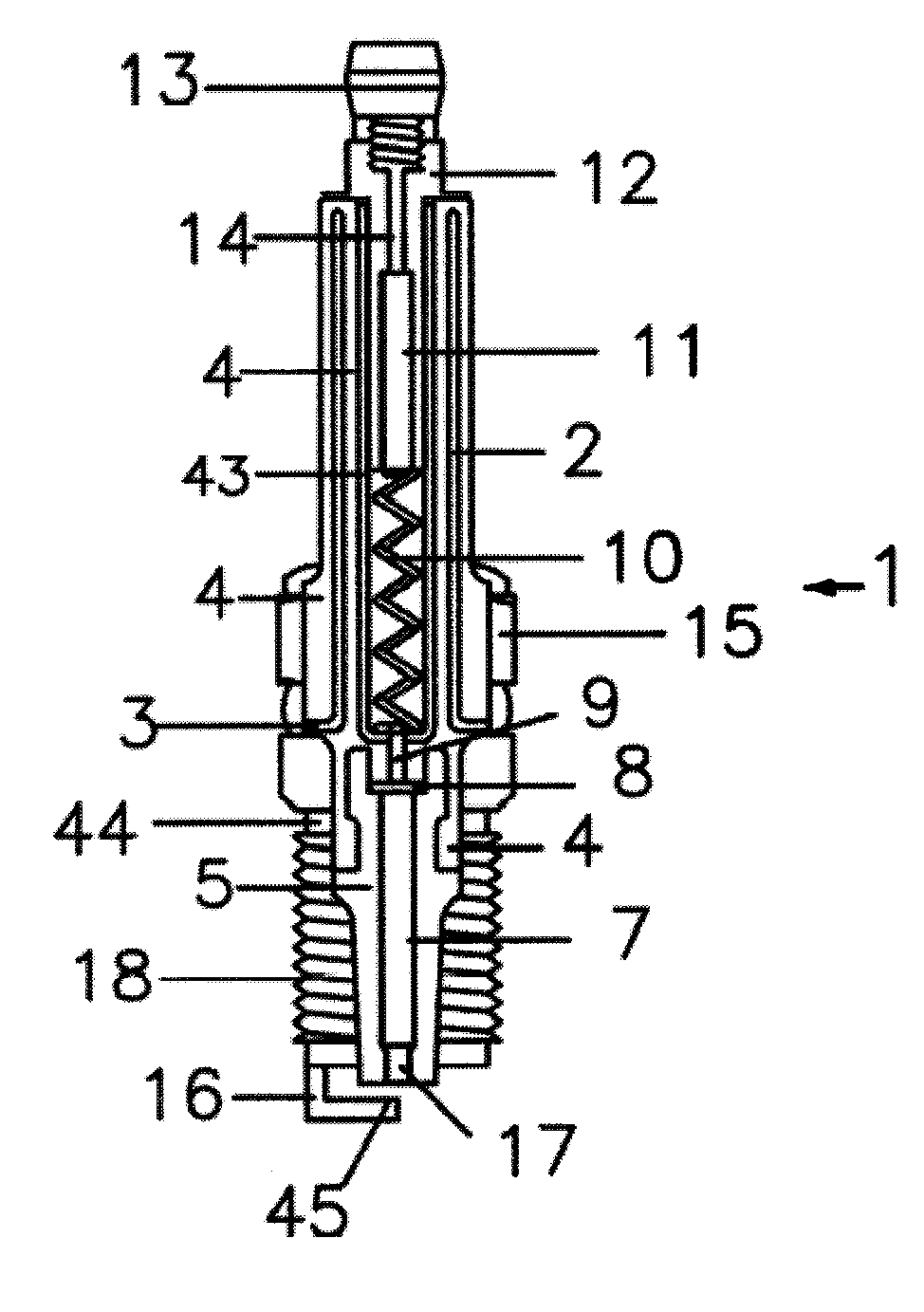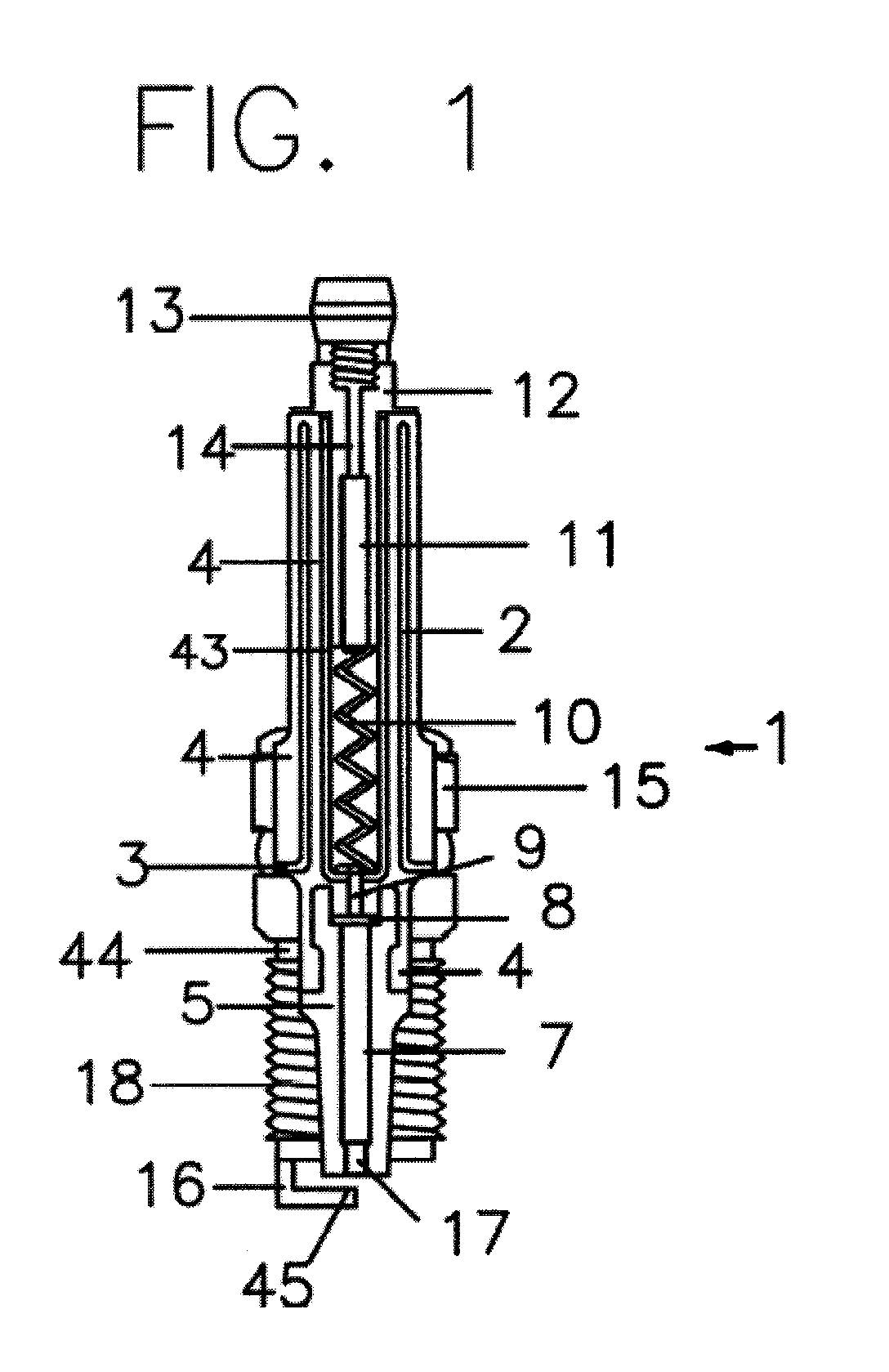Composite Spark Plug
- Summary
- Abstract
- Description
- Claims
- Application Information
AI Technical Summary
Benefits of technology
Problems solved by technology
Method used
Image
Examples
Embodiment Construction
[0045]Referring now to the drawings, in particular FIG. 1, a spark plug or ignition device for spark ignited, internal combustion engines in accordance with the present invention is shown generally as 1. The spark plug or ignition device 1 consists of a preferably metal casing or shell 15 having a substantially cylindrical base 44, which may have external threads 18, formed thereon for engagement with the cylinder head (not shown) of the spark ignited internal combustion engine (not shown). The cylindrical base 44 of the spark plug shell has a generally flattened surface perpendicular to the longitudinal axis of the spark plug 1 to which a ground electrode 16 is affixed, preferably by conventional welding. In an embodiment of the invention, the ground electrode 16 has a preferably rounded tip 45 of Rhenium / Tungsten sintered compound, which resists the erosion of the electrode 16 due to high power discharge, as further disclosed herein.
[0046]The spark plug or ignition device 1 includ...
PUM
 Login to View More
Login to View More Abstract
Description
Claims
Application Information
 Login to View More
Login to View More - R&D
- Intellectual Property
- Life Sciences
- Materials
- Tech Scout
- Unparalleled Data Quality
- Higher Quality Content
- 60% Fewer Hallucinations
Browse by: Latest US Patents, China's latest patents, Technical Efficacy Thesaurus, Application Domain, Technology Topic, Popular Technical Reports.
© 2025 PatSnap. All rights reserved.Legal|Privacy policy|Modern Slavery Act Transparency Statement|Sitemap|About US| Contact US: help@patsnap.com



